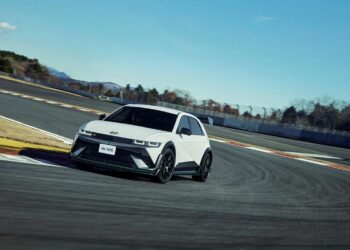Drifting has been steadily gaining momentum in South America, a continent known for its passionate motorsport fans and diverse automotive culture. While the sport is still relatively new to the region compared to other parts of the world, it has quickly developed a dedicated following. From the streets of Brazil to the mountains of Argentina, drifting in South America is carving out its own identity, driven by a mix of local talent, innovation, and the region’s unique environment.
The Emergence of Drifting in South America
Drifting first began to take hold in South America in the early 2000s, largely influenced by the global spread of the sport through media, movies, and video games. The popularity of the “Fast and the Furious” franchise, particularly “Tokyo Drift,” played a significant role in introducing drifting to a broader audience in the region. As car enthusiasts became more aware of the sport, grassroots events started to emerge in various countries.
Brazil was one of the first countries in South America to embrace drifting. The country’s rich car culture, influenced by both American muscle cars and Japanese imports, provided a fertile ground for the sport to grow. Early drift events in Brazil were often informal, held in industrial areas or on private properties. These gatherings allowed enthusiasts to practice and compete in a supportive community environment.
As interest in drifting grew, more organized competitions began to appear. The creation of the Brazilian Drift Championship (BDC) marked a significant milestone for the sport in the country. The BDC provided a platform for drivers to showcase their skills in a professional setting, with standardized rules and judging criteria. The championship quickly gained popularity, attracting top talent from across Brazil and establishing itself as the premier drifting series in the country.
Drifting in Argentina and Chile
Argentina and Chile have also become important centers for drifting in South America. Both countries have a long history of motorsport, with a strong tradition of rallying and circuit racing. Drifting has tapped into this existing enthusiasm for motorsport, offering a new and exciting challenge for drivers.
In Argentina, drifting has found a home in the country’s mountainous regions, where the winding roads provide the perfect setting for the sport. The Argentine Drift Championship has become a popular event, drawing drivers from across the country to compete on some of Argentina’s most challenging tracks. The championship has also helped to raise the profile of the sport in the region, attracting media coverage and sponsorship opportunities.
Chile has a similar story, with drifting events often held in the Andes Mountains or on the outskirts of major cities like Santiago. The Chile Drift Championship has grown rapidly in popularity, becoming a key event in the South American drifting calendar. The country’s unique geography, with its mix of mountains, deserts, and coastal roads, provides a diverse and challenging environment for drifting.
The Challenges Facing Drifting in South America
While drifting in South America has seen significant growth, the sport still faces several challenges. One of the biggest obstacles is the lack of dedicated drifting facilities. Many events are held on repurposed tracks or public roads, which can limit the scope and scale of competitions. The construction of purpose-built drift tracks could help to address this issue, providing a safer and more controlled environment for drivers.
Another challenge is the availability of drift-ready cars and parts. While the car culture in South America is strong, access to specific models and aftermarket parts can be limited due to import restrictions and high costs. This has led many drifters to get creative, using locally available cars and modifying them to suit the demands of drifting. The ingenuity and resourcefulness of South American drifters have become a hallmark of the region’s drift scene.
The cost of participation is also a barrier for many would-be drifters. Building and maintaining a drift car can be expensive, especially in countries where the average income is lower than in other regions with established drifting scenes. Despite these challenges, the passion for the sport remains strong, with many drivers finding ways to participate and compete at various levels.
The Future of Drifting in South America
The future of drifting in South America looks promising, with the sport continuing to grow in popularity and attracting new talent. The success of local championships like the BDC, Argentine Drift Championship, and Chile Drift Championship is a testament to the dedication and enthusiasm of the region’s drift community.
As more people become aware of drifting and the sport continues to gain media attention, there is potential for further development and investment in the region. The construction of dedicated drift tracks, increased access to drift cars and parts, and the expansion of local championships could all contribute to the continued growth of the sport in South America.
The region’s unique geography and diverse car culture also provide an opportunity for South America to develop its own distinct drifting identity. By embracing local styles and innovations, South American drifters can make a significant impact on the global drifting scene.
Drifting in South America is a sport on the rise, fueled by the passion and ingenuity of its drivers and fans. From the streets of Brazil to the mountains of Argentina, the region’s drift scene is diverse, dynamic, and full of potential. While there are challenges to overcome, the future of drifting in South America is bright, with the sport poised to become an integral part of the continent’s motorsport culture.










